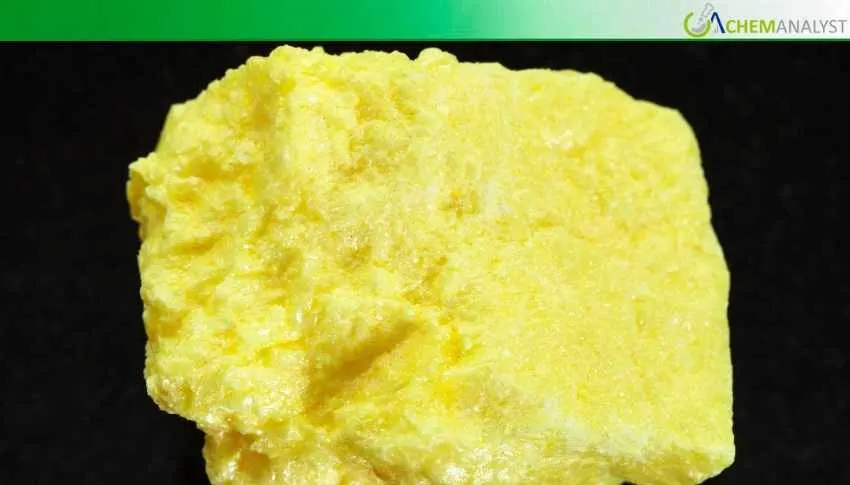Welcome To ChemAnalyst

In the U.S. market in October, insoluble sulphur prices remained stable due to consistent domestic production levels and stable demand for replacement tires. Even with evidence of declining auto sales and a steep reduction in EV market share following the ending of federal-level subsidies, replacement tire shipments have been solid and returned remarkable use rates for insoluble sulphur. U.S.-based producers reported no interruptions in operations and benefitted from stable energy and feedstock costs, complemented by healthy Gulf Coast inventory levels. Imported material from Asia (Malaysia in particular) remained consistent and modest in volume, mostly in line with disciplined U.S. pricing. Industry projections for record tire shipments in 2025 based on replacement demand continue to bode well for insoluble sulfur. Insoluble sulphur continues to provide a market advantage due to its role as an essential vulcanizing agent in the manufacturing of radial tires, which entails periodic high-volume manufacturing without disruption to the cycle. October's market characteristics—stability in operation, balanced supply, and dependent customer demand—demonstrated the compound's resilience in a broader marketplace while exemplifying the compound's unique contribution to sustained manufacturing efforts for tires.
Throughout October, U.S. prices of insoluble sulphur showed little change, balancing steady domestic production with ongoing demand from tire replacement. While the overall market has seen some shift in the vehicle space, insoluble sulphur has maintained a steady market balance with production levels and reasonable market pricing. The producers continued to operate satisfactorily at major production sites with no downtime reported, while energy and feedstock costs remained within expected values. With this production stability, producers maintained outputs and the flow of materials to customers.
The replacement tire industry was still by far the primary demand driver, counterbalancing losses in original equipment shipments. As automotive manufacturers dealt with headwinds associated with a decline in consumer demand and the expiration of the federal EV tax credits, the dynamics of the aftermarket took center stage. Longer vehicle ownership cycles and a shift to hybrid models created potentially robust replacement activity,...
We use cookies to deliver the best possible experience on our website. To learn more, visit our Privacy Policy. By continuing to use this site or by closing this box, you consent to our use of cookies. More info.
